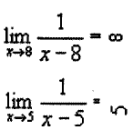|
cruft posted:The Tesla I guess gives me the option to make it feel a little more like an automatic. But it sounds like they removed this option in newer models, for who knows what reason. It worked well convincing my friend to buy a Ford! Mine a still has the creep & low regen settings. Really sucks if they removed those in later cars.
|
|
|
|

|
| # ? May 27, 2024 12:28 |
|
Newer models still have the option, but enabling that options means you're reducing your efficiency a great deal because you'll waste more energy by converting it to heat using your friction brake instead of recharging your battery with it.
|
|
|
|
My options menu, taken approximately ten seconds ago:  Having driven a car with blended (Volt) and without (Model 3), I prefer non blended? It's possible Chevys implementation was just bad, but if I had to slam on the brakes, there was this tenth of a second jerk where the computer went from "use regen" to "oh gently caress switch to pads" that gave me some really awkward sudden stops. Felt like slipping on water at the end of the stop when it would switch over almost.
|
|
|
|
Fame Douglas posted:Newer models still have the option, but enabling that options means you're reducing your efficiency a great deal because you'll waste more energy by converting it to heat using your friction brake instead of recharging your battery with it. They literally donít have the option. I picked up a Model Y a week ago and there is absolutely no interface to control the regenerative braking. There was no such option in the ones I test-drove in May prior to ordering, either. You can still set hold/creep/roll, but that only affects what happens between 1 and 0mph, not what happens above that speed when your foot comes off the accelerator.
|
|
|
|
Westy543 posted:Having driven a car with blended (Volt) and without (Model 3), I prefer non blended? It's possible Chevys implementation was just bad, but if I had to slam on the brakes, there was this tenth of a second jerk where the computer went from "use regen" to "oh gently caress switch to pads" that gave me some really awkward sudden stops. Felt like slipping on water at the end of the stop when it would switch over almost. I would say that's down to the programming in the Volt. I think Toyota sets a gold standard for blended brakes. The hybrid Corolla wagon I've been renting the last few times is drat good, you don't feel the transition at all in normal braking, it just goes smoothly from regen to friction once you're going slow enough. Of course it's a bit rougher if you slam hard on the brakes, but NVH is not really the primary concern during emergency braking. It also applies a surprising amount of regen (plus I think friction braking if necessary) when using ACC and you reduce the target speed or if a car pulls out in front of you. In the latter case, I'm pretty sure it even put on the brake lights a couple of times. It wasn't automatic emergency braking, because that slams the brakes hard, this was more like heavy engine braking. Once, I pulled back over to the right lane after overtaking someone, and with pretty good distance between us, I reduced the ACC from 130kph to 110kph, as the speed limit had just changed there. I expected it to just act any normal ICE car, where it gently bleeds off speed if I let off the gas in top gear or reduce the speed on the cruise control. Nope, it engine braked hard, put on the brake lights and reduced speed by 20kph almost instantly. I really wanted to apologize to the guy behind me for that. KozmoNaut fucked around with this message at 21:57 on Aug 3, 2021 |
|
|
|
Westy543 posted:My options menu, taken approximately ten seconds ago: Has anybody seen anything written about why this was removed?
|
|
|
|
Westy543 posted:It's possible Chevys implementation was just bad, but if I had to slam on the brakes, there was this tenth of a second jerk where the computer went from "use regen" to "oh gently caress switch to pads" that gave me some really awkward sudden stops. Felt like slipping on water at the end of the stop when it would switch over almost. That's really frightening to me, as a software developer. It indicates that there's no mechanical linkage between the brake pedal and the brakes, there's some software deciding to switch from regen to pads. If there's one thing I know for certain about software, it's that eventually it will stop doing what you want it to do. Does Tesla have the same sort of setup, or are they doing a mechanical link? That might explain the difference in what the brake pedal does.
|
|
|
|
Nfcknblvbl posted:Iím my Model 3, Iíll do an emergency brake once a month or so to keep the pads clean. Most owners up north need to have regen set to low during the winter. As long as you are in hold mode this shouldn't be necessary. Tesla can't regen below like 5 MPH so in hold mode everything from 5-0 MPH when approaching a stop is friction brakes automatically blending in so the pads/rotors are still regularly getting light use. Although a once a month emergency brake isn't going to hurt anything either so no real reason to stop if you have a system worked out. cruft posted:Does Tesla have the same sort of setup, or are they doing a mechanical link? That might explain the difference in what the brake pedal does. Tesla brake pedal always applies mechanical brakes and there is a redundant physical linkage just like an ICE car would have. Indiana_Krom fucked around with this message at 22:10 on Aug 3, 2021 |
|
|
|
cruft posted:That's really frightening to me, as a software developer. It indicates that there's no mechanical linkage between the brake pedal and the brakes, there's some software deciding to switch from regen to pads. Maybe I'm misunderstanding your post, but I think all vehicles with regen braking are brake-by-wire with a direct hydraulic linkage that engages in event of computer failure. https://www.youtube.com/watch?v=OrcIlsHsSAM
|
|
|
|
Westy543 posted:My options menu, taken approximately ten seconds ago: I've never experienced this in my Volt, fwiw.
|
|
|
|
Stultus Maximus posted:Maybe I'm misunderstanding your post, but I think all vehicles with regen braking are brake-by-wire with a direct hydraulic linkage that engages in event of computer failure. https://www.youtube.com/watch?v=OrcIlsHsSAM Maybe I'm misunderstanding yours, but brake-by-wire (as in a system where the pedal does not generate the hydraulic pressure used to push the pads) is not a necessary part of regen and many EVs, I would wager most, have normal hydraulic brake circuits like other new cars. They'll work if the car is completely dead, but without boosting in that case. Regen is just engine braking. It's computer controlled, but by the motor controller. Mixing in friction brakes is another feature set on top of this which some EVs have. How they actuate the brakes varies, but you don't need brake-by-wire for a computer to apply the brakes, it just applies hydraulic pressure some point downstream in the circuit.
|
|
|
|
Sonic Dude posted:They literally donít have the option. I picked up a Model Y a week ago and there is absolutely no interface to control the regenerative braking. There was no such option in the ones I test-drove in May prior to ordering, either. Ah, didn't realize that. cruft posted:
It being an option that reduces efficiency and Tesla now being a household name that doesn't have to emulate other cars for familiarity, removing the feature makes sense.
|
|
|
|
Godholio posted:I've never experienced this in my Volt, fwiw. I never have either, in a Gen I or II Volt. The only time you could discern any blending at all was at low speed with very light pedal pressure. You could just about tell when it shifted to friction brakes, but with no real jerkiness. Any kind of regular brake application and it was seamless.
|
|
|
|
Godholio posted:I've never experienced this in my Volt, fwiw. Which model year, by chance? I talked with someone with a 2017 who didn't have any issues, but someone else with a 19 said they noticed similar.
|
|
|
|
The Slack Lagoon posted:How much does having an EV loaded down with stuff impact the range? Looking at a route planner thing to see if getting an EV might work for my situation, and I'm wondering how much range would be dropped off when the car is loaded with gear and people. As a previous reply mentioned, a roof cargo box is probably not a good idea. Loading the car down with stuff increases the mass, which increases the power needed to accelerate to a given velocity and increases the rolling resistance. Adding a roof cargo box increases drag (resistance due to wind). Below are a couple of examples using handwavey math (e.g. ignoring the integrals and things like hills, cross wind, and motor efficiency). Given: P = maV Fd = cr * m * g + 1/2 * cd * r * A * V2 P = FV E = PT Where:
Ignoring drag, we can calculate the power needed to accelerate from to a given velocity using the first formula. A Model 3 LR AWD (4072 lb = 1842 kg), taking 10 seconds to accelerate from 0 to 60mph (26.8224 m/s) works out to: P = maV = 1842 kg * 2.6824 m/s2 * 26.8224 m/s = ~132521 kg*m2/s3 = ~133 kW E = PT = ~133 kW * 10 s / (3600 s/h) = ~370 Wh Adding an extra 100 pounds (45.3592 kg) increases the mass to 1842 + ~46 = 1888 kg: P = maV = 1888 kg * 2.6824 m/s2 * 26.8224 m/s = ~135830 kg*m2/s3 = ~136 kW E = PT = ~136 kW * 10 s / (3600 s/h) = ~378 Wh Drag is trickier, but if we assume a constant velocity of 60mph (26.8224 m/s), reuse the same car (cd: 0.24, assuming A = ~2 m2), and plug that into the second and third formulas, we get: Fd = cr * m * g + 1/2 * cd * r * A * V2 = 0.015 * 1842 kg * 9.8 m/s2 + 0.5 * 0.23 * 1.2 kg/m3 * 2 m2 * (26.8224 m/s)2 = ~270.7 kg*m/s2 + ~198.6 kg*m/s2 = ~ 470 kg*m/s2 P = FV = 470 kg*m/s2 * 26.8224 m/s = ~12588 kg*m2/s3 = ~12.6 kW Adding an empty cargo box increases the projected frontal area (A) and drag coefficient (cd). If we assume the empty cargo box increases A by 0.5 m2 from 2 m2 to 2.5 m2 and cd by ~25% from 0.24 to 0.3, we get: Fd = cr * m * g + 1/2 * cd * r * A * V2 = 0.015 * 1842 kg * 9.8 m/s2 + 0.5 * 0.3 * 1.2 kg/m3 * 2.5 m2 * (26.8224 m/s)2 = ~270.7 kg*m/s2 + ~323.7 kg*m/s2 = ~594.5 kg*m/s2 P = FV = ~594.5 kg*m/s2 * 26.8224 m/s = ~15947 kg*m2/s3 = ~15.9 kW We can counteract increased drag from our empty cargo box by driving slower: V2 = (~470 kg*m/s2 - ~270.7 kg*m/s2)/(0.5 * 0.3 * 1.2 kg/m3 * 2.5 m2) V = sqrt(~199.3/0.45 m2/s2) = 21.0290 m/s = ~47 mph There are studies which talk about this in more detail (with sometimes confusing results), but in general anything that increases the drag coefficient (cd) will dominate at anything above moderate speeds. Nothing above is EV-specific, but EVs have less energy capacity than ICEVs (because batteries are expensive and heavy, and because EVs much more efficient than ICEVs), so the effect is more pronounced. Edit: Fix typos. MrPablo fucked around with this message at 02:27 on Aug 4, 2021 |
|
|
|
MrPablo posted:Fd = cr * m * g + 1/2 * cd * r * A * V2 = 0.015 * 1842 kg * 9.8 m/s2 + 0.5 * 0.3 * 1.2 kg/m3 * 2.5 m2 * (26.8224 m/s)2 I love how simple this math is, and this strengthens my resolve that most physics equations are about canceling units. I remember how awesome it felt when my Physics 101 professor derived E=mc2 by throwing a bunch of thermodynamics equations at each other and canceling units. Anyway, to summarize this post, a roof rack is going to gently caress up your mileage. But not as much as a sail would! cruft fucked around with this message at 00:35 on Aug 4, 2021 |
|
|
|
IIRC the reason regen options were removed is that the EPA range test sets any sort of efficiency settings to the worst possible setting, so removing the setting is free EPA miles
|
|
|
|
Buff Hardback posted:IIRC the reason regen options were removed is that the EPA range test sets any sort of efficiency settings to the worst possible setting, so removing the setting is free EPA miles 
|
|
|
|
Westy543 posted:Having driven a car with blended (Volt) and without (Model 3), I prefer non blended? It's possible Chevys implementation was just bad, but if I had to slam on the brakes, there was this tenth of a second jerk where the computer went from "use regen" to "oh gently caress switch to pads" that gave me some really awkward sudden stops. Felt like slipping on water at the end of the stop when it would switch over almost. I know exactly what you mean, I get this in the Spark EV. The way I've visualized it is like this: On a gas car that only has friction brakes, not pushing down on the brakes is like 0% brakes. Pushing the pedal halfway is like 50% brakes. (might not actually be linear, but bare with me.) On the Spark EV, it seems like not pushing down on the brakes is like 0% brakes, 0% regen. Pushing it 20% down might be 0% brakes, 100% regen. Pushing it down 21% might be 21% brakes, 0% regen. (or maybe it's 10% brakes, 100% regen? Thankfully I almost never have to slam on the brakes, and when I have I'm not looking at the gauge cluster to see if it's still regen-ing.)
|
|
|
|
cruft posted:I love how simple this math is, and this strengthens my resolve that most physics equations are about canceling units. I remember how awesome it felt when my Physics 101 professor derived E=mc2 by throwing a bunch of thermodynamics equations at each other and canceling units. I love canceling units; it's like a game of Tetris. Plus if your units don't come out correct, it's a good sign that you're either missing a term or screwed up on some arithmetic. cruft posted:Anyway, to summarize this post, a roof rack is going to gently caress up your mileage. But not as much as a sail would! That's a good summary!
|
|
|
|
Westy543 posted:Which model year, by chance? I talked with someone with a 2017 who didn't have any issues, but someone else with a 19 said they noticed similar. Mine's a 19.
|
|
|
|
Maybe a dumb question, but if youíre using one pedal mode on an EV, are you also supposed to use the brake to come to a complete stop? is it vehicle-by-vehicle? It feels very weird to drive this way and Iím not confident that Iím doing it right so I keep it turned off.
|
|
|
|
MrYenko posted:With BEVs becoming more common, Iíd imagine shops are going to become more familiar... Tyre shops keep putting my wheels on the wrong way around, and also not putting the lug nut key back in the glove box, so I wouldn't bet on their procedures improving.
|
|
|
|
kitten emergency posted:Maybe a dumb question, but if you’re using one pedal mode on an EV, are you also supposed to use the brake to come to a complete stop? is it vehicle-by-vehicle? It feels very weird to drive this way and I’m not confident that I’m doing it right so I keep it turned off. I can certainly come to a smoother stop than my Leaf does in one pedal mode if I feather it, but I only need the brake pedal for serious stopping.
|
|
|
|
kitten emergency posted:Maybe a dumb question, but if youíre using one pedal mode on an EV, are you also supposed to use the brake to come to a complete stop? is it vehicle-by-vehicle? It feels very weird to drive this way and Iím not confident that Iím doing it right so I keep it turned off. Buff Hardback posted:IIRC the reason regen options were removed is that the EPA range test sets any sort of efficiency settings to the worst possible setting, so removing the setting is free EPA miles
|
|
|
|
cruft posted:Anyway, to summarize this post, a roof rack is going to gently caress up your mileage. But not as much as a sail would!
|
|
|
|
LRADIKAL posted:I can certainly come to a smoother stop than my Leaf does in one pedal mode if I feather it, but I only need the brake pedal for serious stopping. Same. One pedal mode might be my favorite part about driving an EV. Snickering when people post their summer gas prices is up there, though. I appreciate this thread a lot because it teaches me things like I should really learn where the jack point is on my Leaf. The googles give me a lot of pre-2019 results and the car got a pretty big redesign that year, do y'all think it might still be the same despite that?
|
|
|
|
Buff Hardback posted:IIRC the reason regen options were removed is that the EPA range test sets any sort of efficiency settings to the worst possible setting, so removing the setting is free EPA miles Haha oh wow that would explain the latest range bump in the Model 3.
|
|
|
|
Hawkperson posted:I appreciate this thread a lot because it teaches me things like I should really learn where the jack point is on my Leaf. The googles give me a lot of pre-2019 results and the car got a pretty big redesign that year, do y'all think it might still be the same despite that? The redesign was in 2017 but they didn't actually change the body shell much, just the front and rear. I doubt the jacking points have moved.
|
|
|
|
MrPablo posted:As a previous reply mentioned, a roof cargo box is probably not a good idea. Come on Paul we're just asking you to put in your share of the tip, we just had a nice lunch why do you always do this
|
|
|
|
Wayne Knight posted:I know exactly what you mean, I get this in the Spark EV. The way I've visualized it is like this: I don't really get why it matters. If it's well implemented you shouldn't be able to tell if the deceleration is friction or regen. Certainly that's the case with mine, the only difference is the green regen line on the dashboard. Maybe one of the etron or VW iD drivers can comment what it's like in those.
|
|
|
|
knox_harrington posted:I don't really get why it matters. If it's well implemented you shouldn't be able to tell if the deceleration is friction or regen. Certainly that's the case with mine, the only difference is the green regen line on the dashboard. On the ID.3 and 4, the brake feels weird on the first bit of movement. In practice, it wouldn't bother me at all. They also have a buffer above 100% so there is room for some regen when you're fully charged, although it would be useful to limit it to a lower level if you parked on top of a mountain for instance so you could get all the potential regen back. By the way, the I-Pace has a trip meter stat for regen'ed energy. I think it read close to 100 kWh when I left the car after 1600 km. Basically more than a full battery after four batteries worth of travelling. Says something about how much energy is wasted with ICE cars.
|
|
|
|
I wish my Leaf would still regen effectively - having to ride the brakes on long downhills is so frustrating.
|
|
|
|
Sounds like your car is broken. I think I've mentioned it before, but an idiosyncrasy of the Leaf is that when going down a steep enough hill (slowly) in 1 foot mode, it won't use regen at all and will cook your brakes before you know it. You have to switch out of it and use two pedals like some sort of cave man. The regen works in normal mode via brake pedal.
LRADIKAL fucked around with this message at 09:46 on Aug 4, 2021 |
|
|
|
It's an old car - as the battery degrades regen suffers and there is nothing that can be done about it. Same reason that fast charging speeds suffer, the battery just isn't capable of taking on power quickly any more.
|
|
|
|
Yeah it's simply the max charging watts that limits you. The gen 1 Leaf didn't have e-Pedal with mixed braking anyway, but unintentional brake cooking on downhills is certainly a good argument for no brake mixing.
|
|
|
|
CannonFodder posted:I put a windmill on my car to generate electricity. Henry Payne? Is that you? 
|
|
|
|
Ola posted:unintentional brake cooking on downhills is certainly a good argument for no brake mixing. Nah, itís not a good argument at all. With brake mixing you can do a lot more than Teslaís 60 kw of max regen so less brake cooking and it should never be a mystery whether or not youíre dipping into the friction brakes.
|
|
|
|
bird with big dick posted:Nah, itís not a good argument at all. With brake mixing you can do a lot more than Teslaís 60 kw of max regen so less brake cooking and it should never be a mystery whether or not youíre dipping into the friction brakes. More braking power doesn't factor into brake cooking like that. The braking needed to hold constant speed down a hill is measured in kWh as energy, not kW as power. The heat energy has to go somewhere. When old cars with low braking power got cooked brakes, it was because the brake design couldn't cope with the heat, not because the max braking power was low. Now there's more heat because the cars are heavier, but the braking systems are so much better they can deal with the heat, as well as has having more max power. I guess old automatics with little engine braking factors into it too. A modern ICE car will have some engine braking to help spread the heat around, but a fully charged EV will not. I haven't experienced it on the Leaf with e-Pedal as LRADIKAL mentioned, in that case it sounded more like a software corner case than something to do with no available regen.
|
|
|
|

|
| # ? May 27, 2024 12:28 |
|
Ola posted:More braking power doesn't factor into brake cooking like that. The braking needed to hold constant speed down a hill is measured in kWh as energy, not kW as power. The heat energy has to go somewhere. When old cars with low braking power got cooked brakes, it was because the brake design couldn't cope with the heat, not because the max braking power was low. Now there's more heat because the cars are heavier, but the braking systems are so much better they can deal with the heat, as well as has having more max power. Greater regen max = more "braking" without cooking the brakes, because you're not using the friction brakes. Are you disagreeing with that? You're not creating heat energy you're putting electricity into the battery. Teslas max is what? 60-75 kw? What's Porsche's? Over 250 IIRC and Ford's seems to be well over 100 from what I've seen but not sure we have good numbers yet.
|
|
|




































